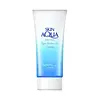What's inside
What's inside
 Key Ingredients
Key Ingredients

 Benefits
Benefits

 Concerns
Concerns

 Ingredients Side-by-side
Ingredients Side-by-side

Water
Skin ConditioningButylene Glycol
HumectantEthylhexyl Methoxycinnamate
UV AbsorberAlcohol Denat.
AntimicrobialIsononyl Isononanoate
EmollientEthylhexyl Triazone
UV AbsorberSodium Hyaluronate
HumectantHydrolyzed Sodium Hyaluronate
Skin ConditioningHydroxypropyltrimonium Hyaluronate
Bis-Ethylhexyloxyphenol Methoxyphenyl Triazine
Skin ConditioningSilica
AbrasivePropanediol
SolventMethylene Bis-Benzotriazolyl Tetramethylbutylphenol
UV FilterDiethylamino Hydroxybenzoyl Hexyl Benzoate
UV FilterDiethoxyethyl Succinate
SolventPEG-40 Stearate
EmulsifyingPropylene Glycol
HumectantAcrylates/C10-30 Alkyl Acrylate Crosspolymer
Emulsion StabilisingDecyl Glucoside
CleansingCaprylhydroxamic Acid
Melaleuca Alternifolia Leaf Oil
AntioxidantBis-PEG-18 Methyl Ether Dimethyl Silane
EmollientPolysilicone-13
Disodium EDTA
Xanthan Gum
EmulsifyingPhenoxyethanol
PreservativeWater, Butylene Glycol, Ethylhexyl Methoxycinnamate, Alcohol Denat., Isononyl Isononanoate, Ethylhexyl Triazone, Sodium Hyaluronate, Hydrolyzed Sodium Hyaluronate, Hydroxypropyltrimonium Hyaluronate, Bis-Ethylhexyloxyphenol Methoxyphenyl Triazine, Silica, Propanediol, Methylene Bis-Benzotriazolyl Tetramethylbutylphenol, Diethylamino Hydroxybenzoyl Hexyl Benzoate, Diethoxyethyl Succinate, PEG-40 Stearate, Propylene Glycol, Acrylates/C10-30 Alkyl Acrylate Crosspolymer, Decyl Glucoside, Caprylhydroxamic Acid, Melaleuca Alternifolia Leaf Oil, Bis-PEG-18 Methyl Ether Dimethyl Silane, Polysilicone-13, Disodium EDTA, Xanthan Gum, Phenoxyethanol
Water
Skin ConditioningAlcohol Denat.
AntimicrobialEthyl Methoxycinnamate
UV AbsorberButylene Glycol
HumectantDipropylene Glycol
HumectantDimethicone
EmollientSteareth-6
EmulsifyingOctocrylene
UV AbsorberDiethylamino Hydroxybenzoyl Hexyl Benzoate
UV FilterCarbomer
Emulsion StabilisingAcrylates/C10-30 Alkyl Acrylate Crosspolymer
Emulsion StabilisingParaffinum Liquidum
EmollientCannabis Sativa Seed Extract
EmollientSqualane
EmollientSodium Hyaluronate
HumectantXanthan Gum
EmulsifyingDisodium EDTA
Sodium Hydroxide
BufferingTriethanolamine
BufferingBHT
AntioxidantPhenoxyethanol
PreservativeMethylparaben
PreservativeParfum
MaskingWater, Alcohol Denat., Ethyl Methoxycinnamate, Butylene Glycol, Dipropylene Glycol, Dimethicone, Steareth-6, Octocrylene, Diethylamino Hydroxybenzoyl Hexyl Benzoate, Carbomer, Acrylates/C10-30 Alkyl Acrylate Crosspolymer, Paraffinum Liquidum, Cannabis Sativa Seed Extract, Squalane, Sodium Hyaluronate, Xanthan Gum, Disodium EDTA, Sodium Hydroxide, Triethanolamine, BHT, Phenoxyethanol, Methylparaben, Parfum
 Reviews
Reviews

Ingredients Explained
These ingredients are found in both products.
Ingredients higher up in an ingredient list are typically present in a larger amount.
Acrylates/C10-30 Alkyl Acrylate Crosspolymer is a synthetic polymer. It is used to thicken and improve the texture of products. Due to its properties, it can prevent water and oil ingredients from separating.
Alcohol Denat. is an alcohol with a denaturant property. It is created by mixing ethanol with other additives.
This ingredient gets a bad rep because it is irritating and drying - mostly due to its astringent property. Astringents draw out natural oils in tissue, constricting pores and leaving your skin dried out.
However, alcohol denat. is not all that bad.
Due to its low molecular weight, alcohol denat. tends to evaporate quickly. One study on pig skin found half of applied alcohol evaporated in 10 seconds and less than 3% stayed on skin.
This also helps other ingredients become better absorbed upon application.
Studies are conflicted about whether this ingredient causes skin dehydration. One study from 2005 found adding emollients to propanol-based sanitizer decreased skin dryness and irritation. Another study found irritation only occurs if your skin is already damaged.
Small amounts of alcohol are generally tolerated by oily skin or people who live in humid environments.
The rule of thumb is if this alcohol is near the end of an ingredients list, it will probably not affect your skin much.
Also...
This ingredient has antimicrobial and solvent properties.
The antimicrobial property helps preserve products and increase their shelf life. As a solvent, it helps dissolve other ingredients.
Other types of astringent alcohols include:
Learn more about Alcohol Denat.Butylene Glycol (or BG) is used within cosmetic products for a few different reasons:
Overall, Butylene Glycol is a safe and well-rounded ingredient that works well with other ingredients.
Though this ingredient works well with most skin types, some people with sensitive skin may experience a reaction such as allergic rashes, closed comedones, or itchiness.
Learn more about Butylene GlycolDiethylamino Hydroxybenzoyl Hexyl Benzoate (DHHB) is a chemical UV-A absorber. It is formulated for high UVA protection (320-400 nm).
DHHB is well-liked for:
DHHB has been approved by the EU, Japan, Taiwan, and South America for use up to 10%. Unfortunately, it has not been approved for use in the US or Canada due to slow regulatory processes.
This ingredient is soluble in oils, fats, and lipids.
Learn more about Diethylamino Hydroxybenzoyl Hexyl BenzoateDisodium EDTA plays a role in making products more stable by aiding other preservatives.
It is a chelating agent, meaning it neutralizes metal ions that may be found in a product.
Disodium EDTA is a salt of edetic acid and is found to be safe in cosmetic ingredients.
Learn more about Disodium EDTAPhenoxyethanol is a preservative that has germicide, antimicrobial, and aromatic properties. Studies show that phenoxyethanol can prevent microbial growth. By itself, it has a scent that is similar to that of a rose.
It's often used in formulations along with Caprylyl Glycol to preserve the shelf life of products.
Sodium Hyaluronate is hyaluronic acid's salt form. It is commonly derived from the sodium salt of hyaluronic acid.
Like hyaluronic acid, it is great at holding water and acts as a humectant. This makes it a great skin hydrating ingredient.
Sodium Hyaluronate is naturally occurring in our bodies and is mostly found in eye fluid and joints.
These are some other common types of Hyaluronic Acid:
Learn more about Sodium HyaluronateWater. It's the most common cosmetic ingredient of all. You'll usually see it at the top of ingredient lists, meaning that it makes up the largest part of the product.
So why is it so popular? Water most often acts as a solvent - this means that it helps dissolve other ingredients into the formulation.
You'll also recognize water as that liquid we all need to stay alive. If you see this, drink a glass of water. Stay hydrated!
Learn more about WaterXanthan gum is used as a stabilizer and thickener within cosmetic products. It helps give products a sticky, thick feeling - preventing them from being too runny.
On the technical side of things, xanthan gum is a polysaccharide - a combination consisting of multiple sugar molecules bonded together.
Xanthan gum is a pretty common and great ingredient. It is a natural, non-toxic, non-irritating ingredient that is also commonly used in food products.
Learn more about Xanthan Gum